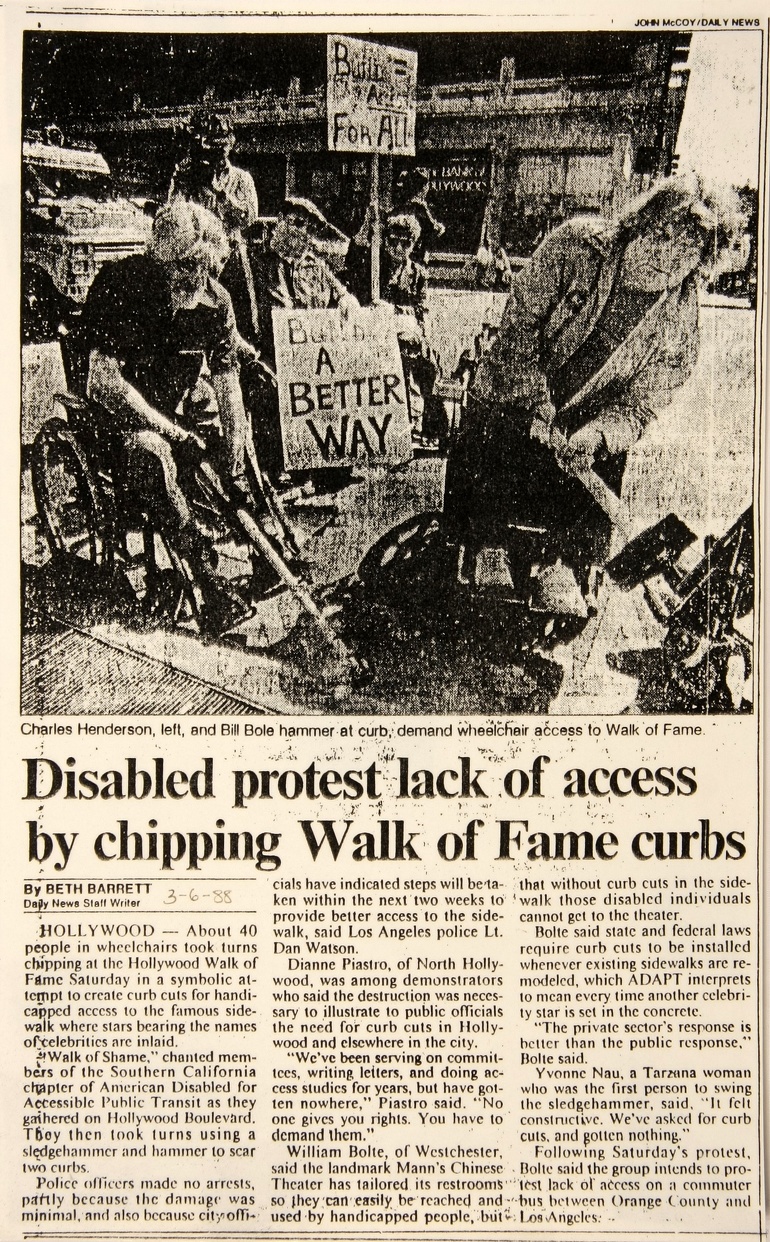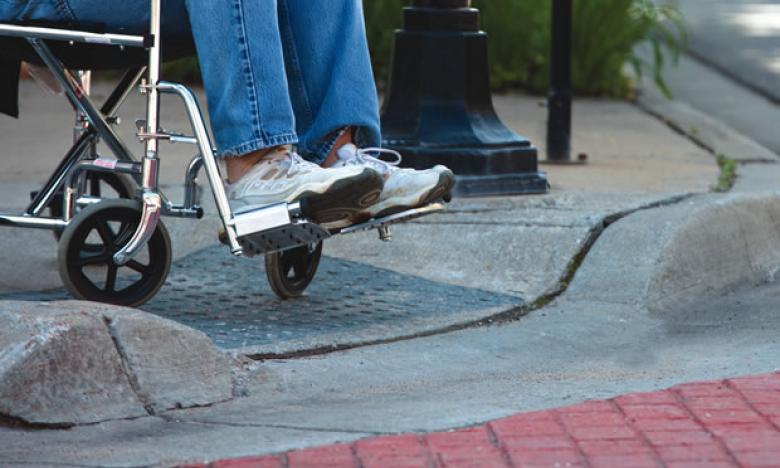
The curb cut is a work of assistive technology so commonplace that it is more a part of assistive infrastructure than a “product.” Curb cuts, those short concrete ramps found at just about every pedestrian intersection in the United States, provide a gentle slope from an elevated sidewalk to the street surface below. About 1 meter wide, they provide a path for wheelchair users to safely and comfortably cross the street.
They have origins in the United States as far back as the 1940s, when curb cuts were installed on a small scale in communities with high curbs and large populations of disabled WWII veterans. Today, they benefit far more people than just wheelchair users.
Curb cuts allow us to safely roll ourselves, our children, our belongings, and just about anything on wheels around our built environments. They make public life more navigable for people with mobility disabilities, whether or not they use assistive tech like wheelchairs, canes, or crutches to get around. The universal design of curb cuts points to the notion of disability as a socially constructed phenomenon.
Before the Disability Rights Movement of the last century, many urban wheelchair users would have been constrained to a single city block without the help of an aide to lower them onto the street and lift them onto the opposite curb. Thanks to the activism of disability rights groups like the Rolling Quads, wheelchair users (and people across the spectrum of limit-ness) can maintain their independence and dignity as they move about.
The Rolling Quads were a group of disabled student organizers at UC Berkeley that formed in the 1960s. They put pressure on Berkeley City Council to install curb cuts around the city when they conspired to carve their own accessible routes through town. They and their able-bodied allies set out under cover of night with sledgehammers and bags of concrete to DIY their own curb cuts. Their audacious spirit is in part responsible for the ubiquity of curb cuts today.

Curb cuts are often paired with tactile paving. Tactile paving (also referred to as tactile tiles, Tenji blocks, or truncated domes) are meant to aid blind or low-vision people in navigating their environment. They are often placed along the edges of walkways such as crosswalks and subway platforms. When using a white cane, pedestrians who cannot see may feel for changes in the texture of the ground that indicate a transition. An unexpected benefit is that their traction may prevent people and objects from sliding down into traffic. The partnership between curb cuts and tactile paving speaks to the utility and compatibility of curb cuts.

Curb cuts (and tactile paving) are also accessible in that they are affordable—in fact, free for all to utilize! The implementation and upkeep of curb cuts and tactile paving at pedestrian intersections certainly seems like a win-win. Nevertheless, naysayers like one Stu Bykofsky, writing in the Opinion section of the Philadelphia Inquirer in 2012, resist accommodations like these that comprise what they perceive as a disproportionate amount of the infrastructure budget.
Bykofsky writes that he and like-minded conservatives “are not unsympathetic to people living with disabilities, but what about the cost to all of us?” He just believes that these upgrades take up a disproportionate amount of the paving budget, which is funded by taxpayer dollars. This writer tries to make an economic argument for his case, but sadly ends up reinforcing the victimhood model of disability with his condolatory remarks.
Arguing that the use of tactile paving on curb cuts doesn’t justify the cost is shortsighted, so to speak, as it ignores the benefits that these features provide to all, regardless of mobility. Furthermore, accessible pedestrian walkways provide powerful economic benefits. By enabling disabled people to get to and from work; to shop for goods, and go wherever they please, curb cuts allow them to contribute to the local economy and participate in public life. While there is always more work to be done in terms of making physical spaces accommodating to those with mobility disabilities, curb cuts are an important stepping stone on the path.
